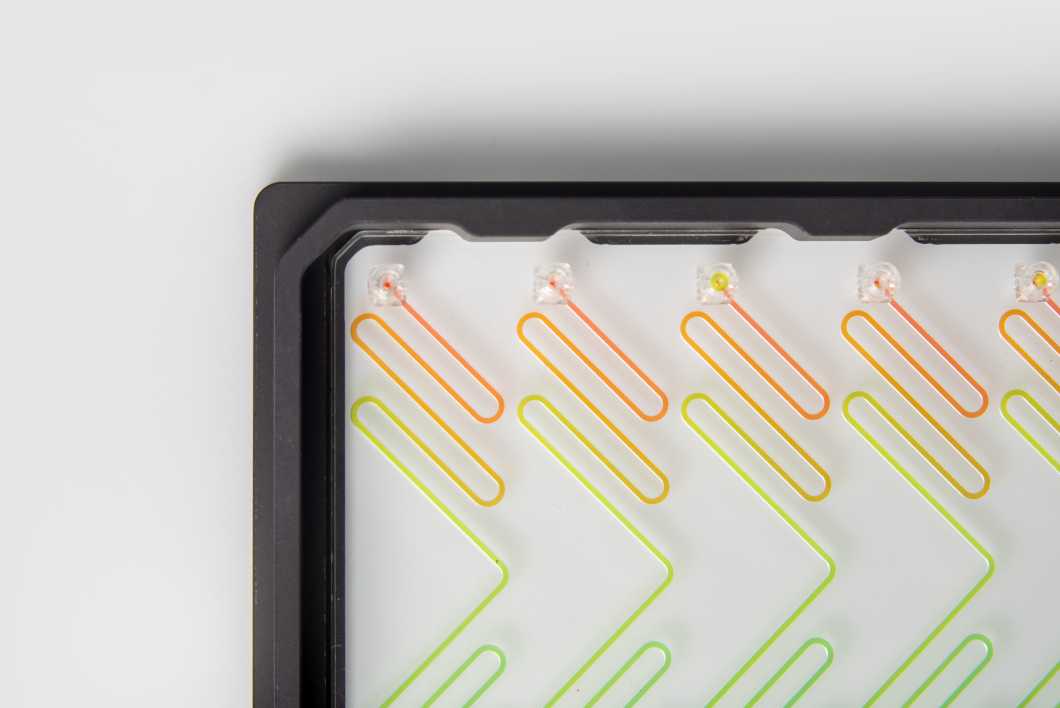PDMS is great for early prototyping – but not for long-term R&D or commercialization. For high-performance applications like coculture, 3D tissue models, or complete microphysiological systems (MPS), thermoplastic devices deliver superior performance and scalability.
Why make the switch to thermoplastics?
Small molecule absorption skews your results.
PDMS absorbs drug compounds, distorting concentrations and compromising your data. Thermoplastics preserve accurate dosing, so your results reflect real biological responses.
Uncured PDMS can leach toxic compounds.
Residual oligomers from PDMS can disrupt sensitive cell types, affecting their behavior and morphology. Thermoplastics provide a stable, biocompatible environment for consistent results, even with solvent exposure.
Hand-fabricated chips slow you down.
Manual processes lead to batch inconsistencies and testing delays. Transition Molding technology enables high-throughput, production-grade thermoplastic chip fabrication – scalable from early experiments to clinical readiness in days, not months.
